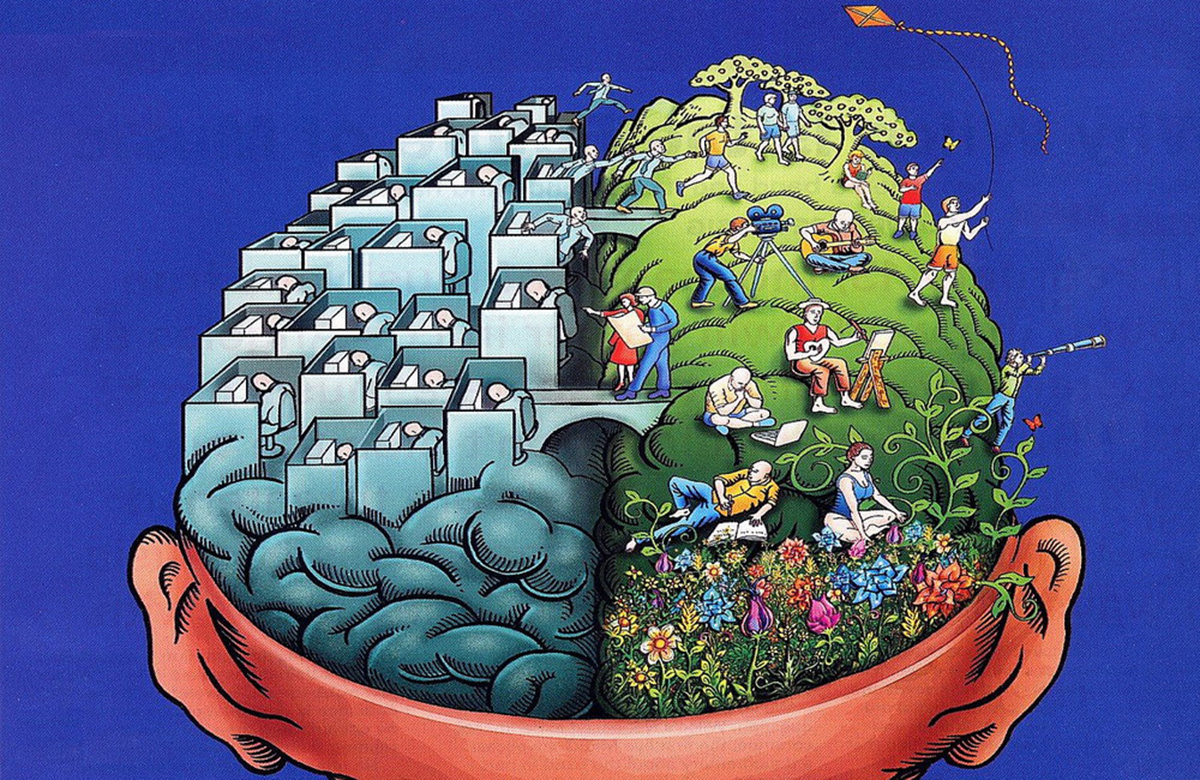Table of Contents
Brain lateralization
For years, people have thought that each side of the brain or hemisphere is in charge of controlling different activities. Psychologists have developed then a variety of tests to determine if a person uses more the right side or the left side of the brain, based on personality. However, in recent years, many scientists have shown that even when certain tasks are confined to one or other hemisphere, it is actually the integration of information between both brain sides that deciphers the signals that come from the outside and create de right responses to those stimuli.

How is the brain divided?
The brain is divided into the right and left hemispheres, which are connected through a limited set of connections.
This structure lies right in between hemispheres and participates in the transmission of information from one hemisphere to another. Even when both hemispheres look similar, they do have some subtle differences in their morphology and size. This morphological asymmetry has been detected thanks to techniques of brain imaging that can identify changes in the size of certain regions of the brain, like magnetic resonance imaging (MRI), for example.
Differences in function
Apart from the differences in size and morphology, each brain hemisphere is specialized in one or another cognitive ability. How do we know this? Well, for years, scientists have studied how alterations in brain hemispheres affect certain abilities, such as speech and vision, for example. Many studies have shown that when one hemisphere is damaged, some normal tasks are affected and people have impaired sight or loose the ability to speak or to comprehend words.
The brain is like a factory that processes information: it is divided into regions that are experts on deciphering certain type of data. If any of these regions is damaged, there is no other region that has the proper neurons to process that data and therefore, affected patients can no longer carry out certain activities.
Let’s illustrate this with an example. Language is a widely studied ability of the human being. How do we understand words and how can we transform our thoughts into words?
These two sites are named after their discoverer’s, who basically saw that people that had injuries at these regions lost their ability to either understand language or to speak coherently. This way, they realize that speech is mainly processed in the left hemisphere of the brain.
Differences between men and women
There are also sexual differences in how our brain processes data.
See Also: Female vs. Male Brain - Is There A Difference?
This is why there are differences between how men and women perceive the world, especially when talking about spatial and visual abilities. Sexual differences even affect the way men and women respond to injuries in the brain.
- NIELSEN, J. A., ZIELINSKI, B. A., FERGUSON, M. A., LAINHART, J. E. & ANDERSON, J. S. 2013. An evaluation of the left-brain vs. right-brain hypothesis with resting state functional connectivity magnetic resonance imaging. PLoS One, 8, e71275
- TOGA, A. W. & THOMPSON, P. M. 2003. Mapping brain asymmetry. Nat Rev Neurosci, 4, 37-48
- TOMASI, D. & VOLKOW, N. D. 2012. Laterality patterns of brain functional connectivity: gender effects. Cereb Cortex, 22, 1455-62.
- Photo courtesy of Allan Ajifo by Flickr : www.flickr.com/photos/125992663@N02/14414603887
- Photo courtesy of BruceBlaus by Wikimedia Commons : en.wikipedia.org/wiki/Cerebral_hemisphere#mediaviewer/File:Blausen_0215_CerebralHemispheres.png

